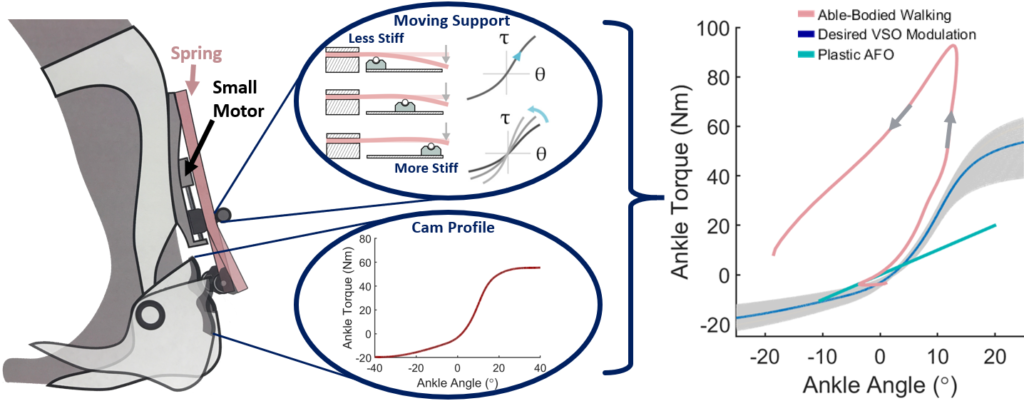Variable Stiffness Orthosis

Motivation
Individuals with hemiparesis resulting from neuromuscular conditions like stroke or Cerebral Palsy often have ankle weakness and instability. These people commonly wear a solid plastic ankle-foot orthosis (AFO) to support their foot and ankle during gait. These AFOs prevent ankle plantarflexion to avoid foot-drop and make sure the ankle is at neutral position at the beginning of each stride. But, these passive plastic braces behave like linear springs in parallel with the user’s biological limb, and do not mimic the nonlinear biological torque-angle relationship of the ankle. This behavior can make conventional AFOs uncomfortable and unable to change their stiffness characteristics to accommodate multiple ambulation tasks. We designed a novel ankle-foot orthosis that can generate a more biomimetic stiffness profiles and change its stiffness in real time for different mobility tasks.

Approach
The Variable Stiffness Orthosis (VSO) has a customizable cam-based transmission adapted from the Variable Stiffness Prosthetic Ankle. The VSO’s cam transmission can be designed to prescribe any torque-angle function and can be quickly swapped out to accommodate different users. The device can also change the magnitude of its overall stiffness in real time by changing the support condition on the leaf spring to accommodate different ambulation tasks.
We are currently working on characterizing the stiffness characteristics of the VSO using a custom stiffness measurement apparatus (SMApp), and verifying our ability to design custom cam profiles to generate desired torque-angle curves. Future efforts for this project include studying the energetic and biomechanical effects of stiffness modulation during ambulation tasks, as well as how human users learn and perceive the changing stiffness profiles. We are currently testing this device with able-bodied users as well as those with ankle muscular weakness.
Contributors: Marcos Cavallin, Nikko Van Crey, Elliott Rouse
